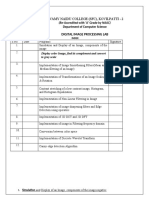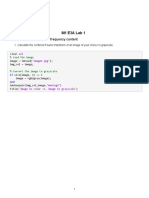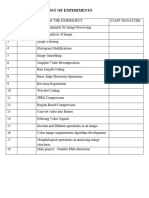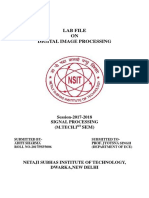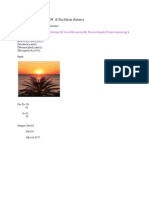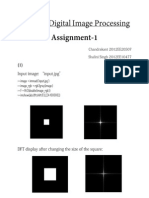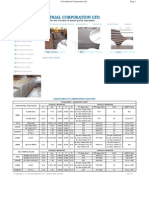0% found this document useful (0 votes)
18 views7 pagesR Programming File
This R program demonstrates point-to-point image transformations, including histogram equalization, geometric transformations like rotation, scaling and translation, linear filtering using convolution with Gaussian and Sobel filters, and edge detection using ideal filters in the frequency domain and non-linear filtering with a Laplacian mask. Key steps include loading an image, converting to grayscale, computing histograms and Fourier transforms, applying various filters, and displaying the original and transformed images.
Uploaded by
Krishna SoniCopyright
© © All Rights Reserved
We take content rights seriously. If you suspect this is your content, claim it here.
Available Formats
Download as PDF, TXT or read online on Scribd
0% found this document useful (0 votes)
18 views7 pagesR Programming File
This R program demonstrates point-to-point image transformations, including histogram equalization, geometric transformations like rotation, scaling and translation, linear filtering using convolution with Gaussian and Sobel filters, and edge detection using ideal filters in the frequency domain and non-linear filtering with a Laplacian mask. Key steps include loading an image, converting to grayscale, computing histograms and Fourier transforms, applying various filters, and displaying the original and transformed images.
Uploaded by
Krishna SoniCopyright
© © All Rights Reserved
We take content rights seriously. If you suspect this is your content, claim it here.
Available Formats
Download as PDF, TXT or read online on Scribd
/ 7

